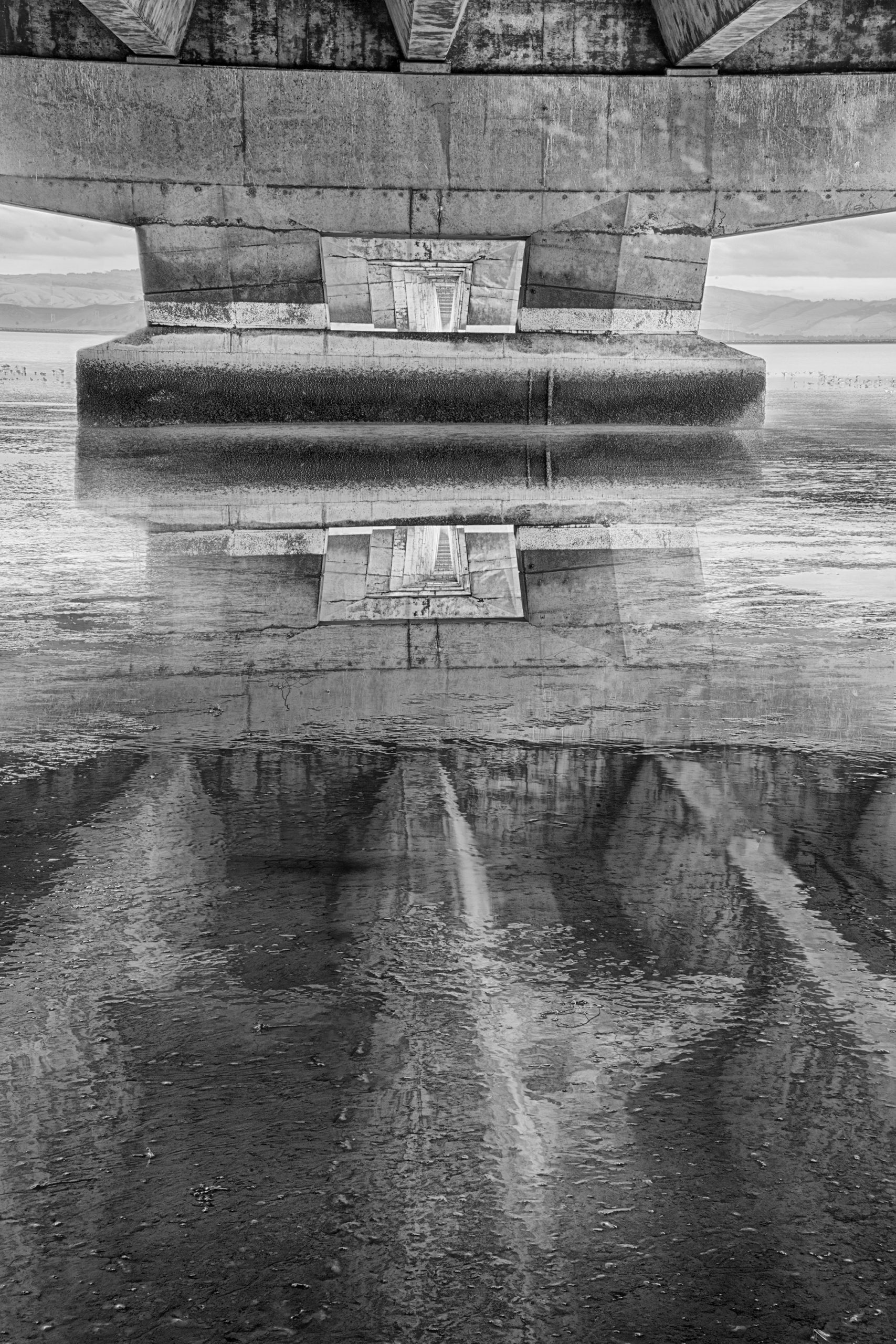In 1982, a new Dumbarton Bridge replaced the old, cast-iron cantilevered span across San Francisco Bay from Hayward to Palo Alto. The hardest part of the construction was the giant cast iron footings deep down into the muck and mud of the Bay. This location was close to the first bridge crossing the Bay, an abandoned train bridge finished just after the great San Francisco earthquake of 1906.

Climbing down the side of the bridge to get under it reminded me a bit of an earlier adventure with Berkeley Municipal Pier. The footing was treacherous in stagnant salt water, mud, and detritus, and I made my way carefully around and through a bend in the dilapidated barbed-wire fencing.
Once under the bridge, I found myself on a confronting the colossus of the cement footings of the bridge. These underpinnings were reflected in the inter-tidal zone mud flats.
I put my camera (a Nikon D850) on the tripod and added a polarizing filter to amplify the reflections of the underbelly of the bridge. I made eight exposures using my 28-300mm Nikkor lens at 58mm. Each exposure was stopped down (at f/29) because I needed maximum depth-of-field to render sharply both the nearby reflections and the recession of pillars through the opening in the columns. The sensitivity was ISO 64. My exposure speeds were from 1/20 of a second to 6 seconds.
I combined and processed the exposures using Adobe Bridge, Adobe Photoshop, Nik HDR Efex Pro, Nik Color Efex, Nik Silver Efex, Topaz Adjust, and Topaz Simplify.
I like to photograph the naked underbelly of bridges. Here’s another one of mine that has had considerable play: Under the Yaquina Bay Bridge.